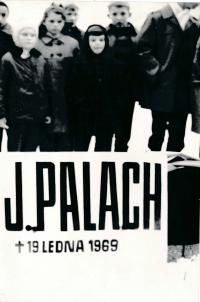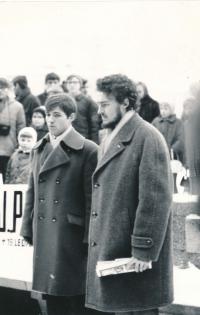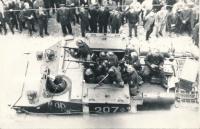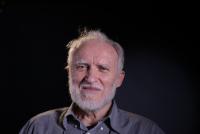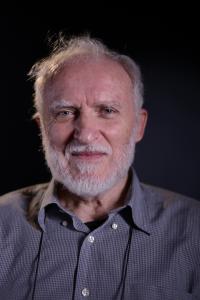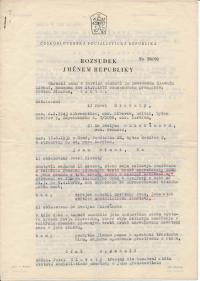“I created a space where I wouldn’t be bored, where I wouldn’t suffer.”

Download image
Pavel Hlavatý, painter, graphic artist, and art collector, was born on the 4th of February, 1943 in Albrechtice near Turnov. He was seven and a half years old when he was sent to a children’s home in Turnov shortly before his mother’s death. After the younger children’s home was merged in 1952, he was brought up by his mother’s sister Eleonora Reslová in Liberec, and then by his older sister in Nový Bor. After attending grammar school for one year, he switched to the State Art School of Doctor Zdeněk Nejedlý in Uherské Hradiště, where he studied the visual arts. He received a “blue book” excusing him from military service, and as a graduate he began work as a building designer at Julius Fučík Mine in Petřvald. He rented a flat in the nearby city of Havířov, and began teaching at a school. Until 1968, he drew drawings for the satirical magazine Dikobraz (Porcupine) and Literární noviny (Literary News), and he wrote reports from places like Austria and Paris. The first time he exhibited his works was at the Young People’s Exhibition in Ostrava in 1968. After the Warsaw Pact invasion, he actively helped organise the petition calling for the removal of parliamentary representative and co-author of the “letter of invitation” (on which pretext the Warsaw Pact armies invaded the country), Drahomír Kolder, for which he was charged with defaming a state functionary under Section 103 of Czech law. He was also punished for creating the “anti-Soviet” exhibition Protestkresby 68 (Protest Pictures 68), this time for defaming a state of the worldwide Socialist network and its representatives under Section 104. He fell ill with rheumatic fever while at the Heřmanice Correctional Facility in Ostrava-Hrušov, and as the illness was not addressed, he spent another two months in hospital after his release and never fully recovered from the damage it caused. When the Union of Visual Artists was dissolved, he was not registered into the Czech Fund, and he was thus barred from selling his art through the centralised distribution company Dílo (Work). He was not allowed to exhibit, teach, lecture, or export his works abroad, magazines and newspapers had his name blacklisted, and so he drew under various pseudonyms. Once every three months he was questioned on his means of living, he had to report whom he had met with, but he managed to keep his studio and his free artist license. With the help of friends he was able to exhibit his works abroad, where he obtained 54 awards and managed to secure a living for himself even during the normalisation period. In 1983, he married for a second time.
